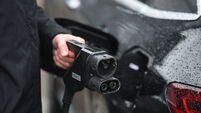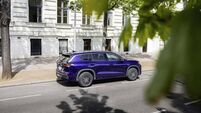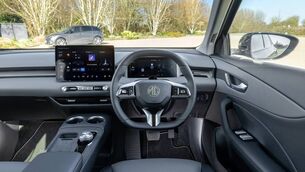Ineos Grenadier Quartermaster review: rugged 4x4 tested on Irish roads and off-road terrain
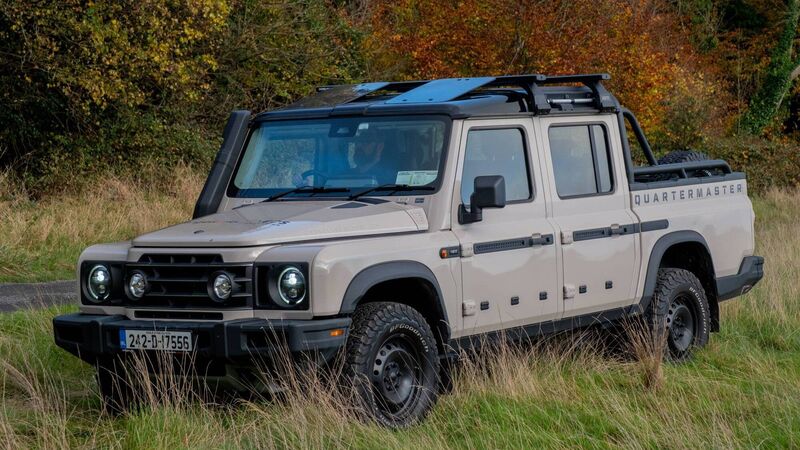
The Ineos Quartermaster 4X4 pick-up was inspired by owner Jim Ratcliffe’s love of the discontinued Land Rover Defender.
|
INEOS GRENADIER QUARTERMASTER |
|
|---|---|
|
|
On road: ★★☆☆☆ | Off road: ★★★★☆ |
|
|
from €59,995 - €65,995 as tested |
|
|
a BMW-sourced three litre turbodiesel with 245bhp |
|
|
surprisingly un-utilitarian |
|
|
for the great wide open – only |
This is a story about one man and a car he loved. That particular car was eventually discontinued by its manufacturer and the man decided he would try to buy the assembly line and the whole production process.
The owners wouldn’t sell, so the man thought to himself: ‘Sod you, I’ll build my own.’ And he did.
That man was Jim Ratcliffe, possibly the richest man in England and the owner of the Ineos petro-chemical empire, one of the biggest players in the world in its segment. He also recently bought a significant stake in Manchester United.
One of his passions in life is off-road driving and to that end he adored the Land Rover Defender – the original one – because to paraphrase the words of the old Sound of Music song, it could climb every mountain/ford every stream/follow every rainbow/until you find your dream.
Ratcliffe’s favourite pub is called The Grenadier in London’s ritzy Belgravia, so when Tata, who then owned Land Rover (and indeed still do), rebuffed his 2016 attempts to continue building the Defender he decided to, er, plough his own furrow and he named the vehicle The Grenadier.
He’s since spent an estimated £650m on this pet project which is, perhaps, a tad more than, say, your average car collector might spend, or even your average supercar collector. Or even the rest of us who depend on scale models for our kicks.
The project has run into many difficulties: not least of which was finding somewhere to make it. Despite his Brexit-bias, the boss was forced into an ex-Smart Car plant in France. But hey, that’s business.
He also had to find a team of engineers to design and build what could be described as something of a beanstalk. The wish list was long: a source for engines and gearboxes; and suppliers to make everything from the doorhandles to the floor mats – everything. It was a monumental task, even for a guy with pockets as deep as his.
It’s taken a while, but the effort is now coming to full fruition and national distributors are being appointed across the globe. Here in Ireland a company called Orangeworks got the nod and it is now in charge of marketing and selling the Ineos range here.
That being so, we were recently invited to try the Quartermaster pick-up version of the Grenadier in Fieldmaster spec, which is essentially the commercial version and which the distributors feel will be the big seller in Ireland and which is priced at less than sixty grand and a very competitive proposition it is indeed.
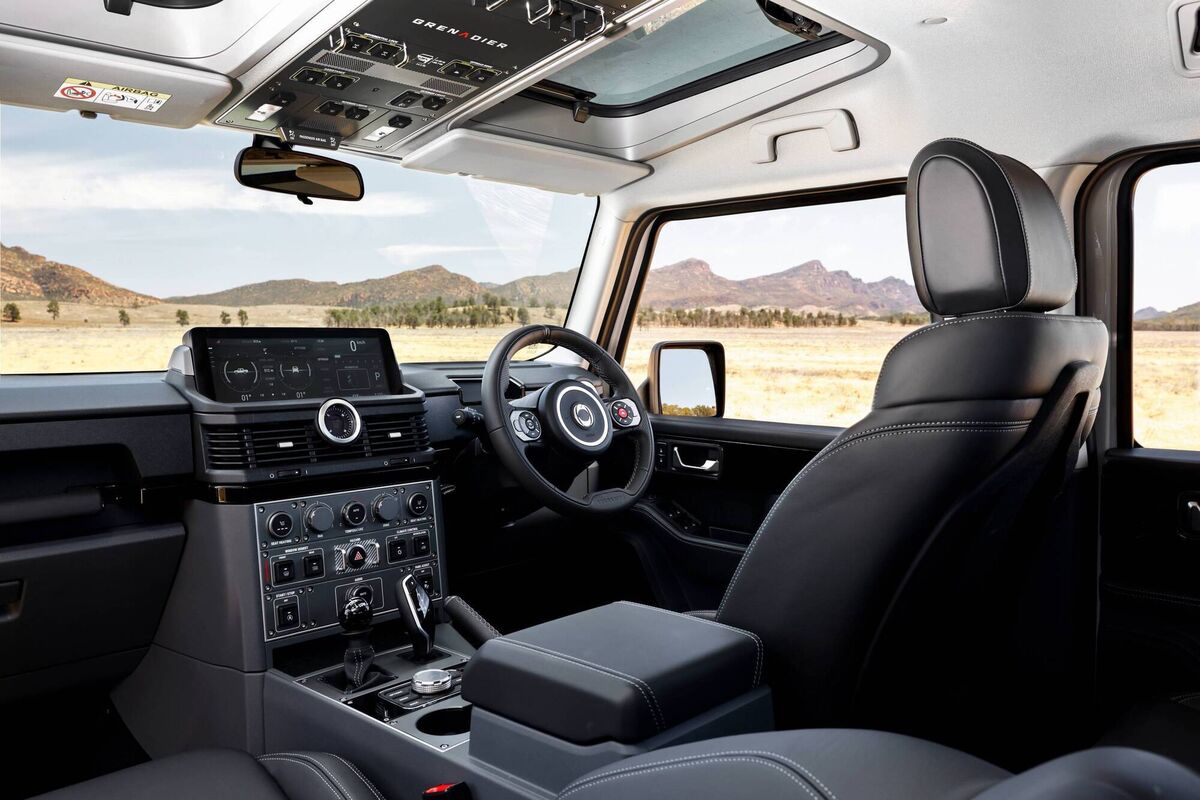
There is no denying where the spiritual heritage of the Grenadier lies and anyone who ever loved the original Defender will, on first sight, fall head over heels for this imitator. Indeed, so close is the look of one to the other that Jaguar Land Rover (JLR) took a case against Ineos for trademark infringement, but actually lost due to insufficient similarities.
While the Grenadier is a traditional SUV, the Quartermaster is a pick-up only and there are two and five-seat options; from the front to the rear of the passenger seats, the two are almost identical, but the pick-up gains some 305mm in wheelbase and its length is almost a metre longer than its sibling.
Everything about this car is about practicality and while the engineers have done as much as they could to build in on-road ability, the truth of the matter is that, in essence, it is more at home in the Gobi desert than it is on city streets.
In terms of actual physical presence, it is without peer; this thing truly stands out. The tester, in its ‘Magic Mushroom’ (I kid you not) colour scheme and it would not surprise if it was visible from the international space station. It does not so much catch your eye, as blot out everything else horizon-to-horizon.
It is huge and, as such, you can forget attempting to get it into your nearby multistorey car park or negotiating it into a tight city parking space; indeed, you can nearly forget bringing it into town at all. It was bred for the great wide open and is only at home there.
Unlike the original Defender and its ‘Ben Hur’ leaf spring suspension, this is more conventionally sprung with coil springs and anti-roll bars all round. Like the original it too has a ladder chassis and this might just explain why it doesn’t really like tarmacked surfaces.
It bucks around horribly on conventional roads and even after five minutes of urban driving, it is nearly intolerable. Not helped by steering which doesn’t self-centre, meaning much added input from the driver, and a turning circle akin to that of an oil tanker, it is nothing like as sophisticated in this regard as such as the Ford Ranger or the VW Amarok.
While the design will allow you to summit a mid-size Alp without difficulty, it amplifies the most minor imperfections on any road into crater-esque proportions and this does become tiresome.
Hell, even getting in and out of it is a chore. You literally have to climb into it and abseil out. But, when you’re in there you truly do feel king of the castle, with imperious all-round views and command of all you survey. The cockpit and its unique switchgear layout are amazing, however.
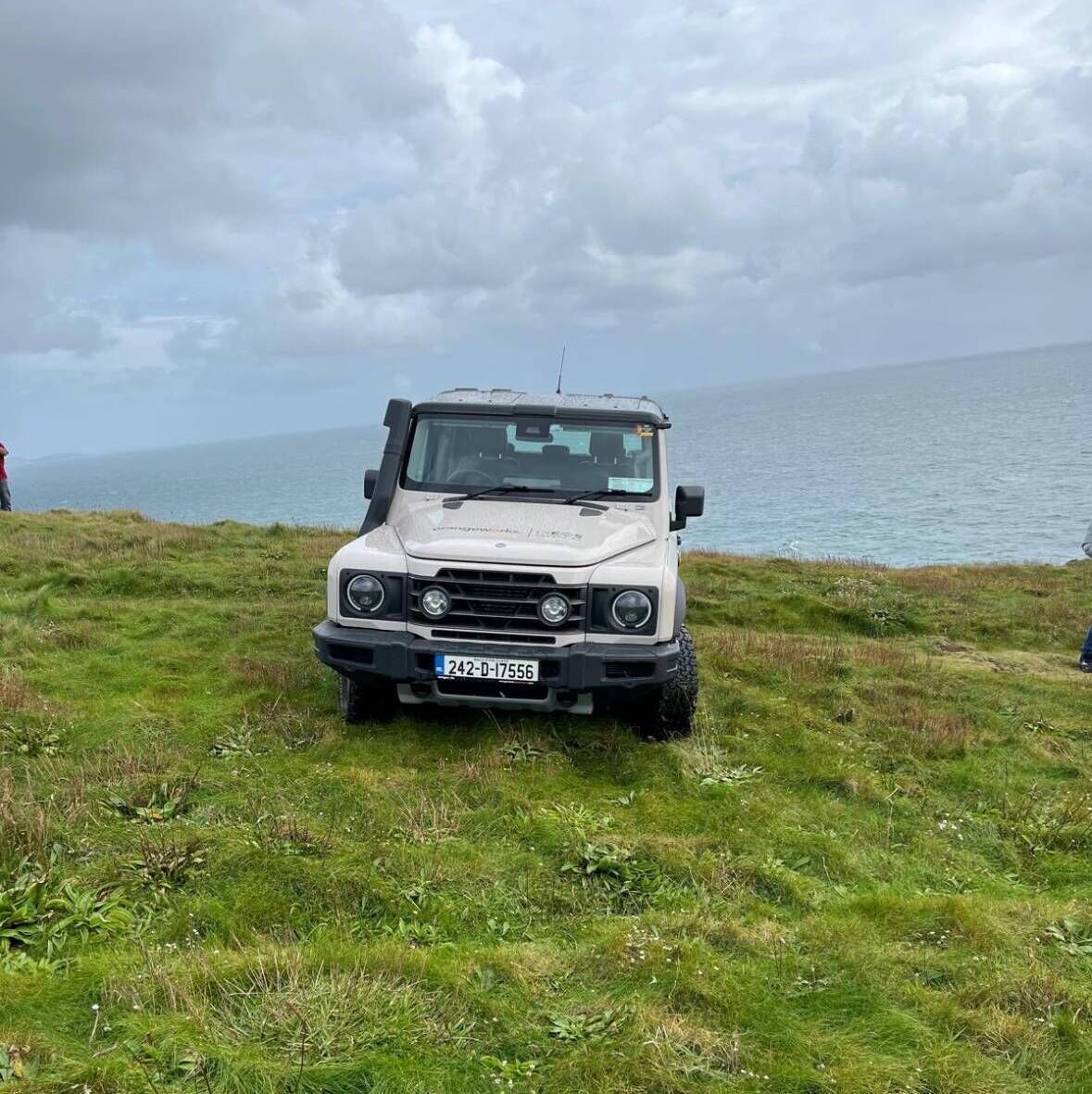
The centre console, which is the centrepiece of the dash, actually extends upwards into the roof above the windscreen and the effect is similar to being aboard the command module of one of the Apollo moon rockets. It is amazing and gob-smacking – like so much else about the car – but it is not easy to navigate, to the point where you’re nearly afraid to touch anything for fear of enabling or disabling something important.
That said, the 4x4 system is in permanent operation and while there are no terrain modes – as was the case with the Defender – there is a low ratio eight speed gearbox with diff locks and all that is controlled by a simple lever.
When we tried some off-roading on it on Brow Head, where we reached places we had hitherto never been before, the Grenadier did everything asked of it. It treated truly stiff terrain with absolute and utter contempt – distain, even. So, a medium-sized Alp should present little difficulty.
Such a task would be helped by the BMW-sourced three litre turbodiesel engine which is fantastic. Indeed, it seems incredible we’ve had so much to talk about that it is nearly a footnote. It’s a smooth unit with 245 bhp at hand, providing a 0-100 km/h time of 9.8 seconds and a top speed just shy of 160 km/h. For the size and weight of the thing it is no surprise that it returns just 9.4 l/100 km (29.5 mpg) in fuel consumption.
Every single person we met during our tenure with the car was completely in awe of it; it simply stopped people in their tracks and was undoubtedly a massive conversion piece. The reactions to it varied from “I have to have one,” to “why the hell would you want something so gross.” Whatever else it was, a non-talking point it most certainly wasn’t.
Unless you’re Grizzly Adams, this is not going to appeal to those ‘lifestyle’ customers who’ve latched onto the whole SUV thing, but it is going to attract hardcore 4x4 people who really like getting their hands – and everything else – dirty off-road.
It’s a curious one this. Undoubtedly able and rugged beyond question, it will undoubtedly find a happy home in many places. Very few will be in the city, however, as it is, without doubt, one for the great wilderness.
